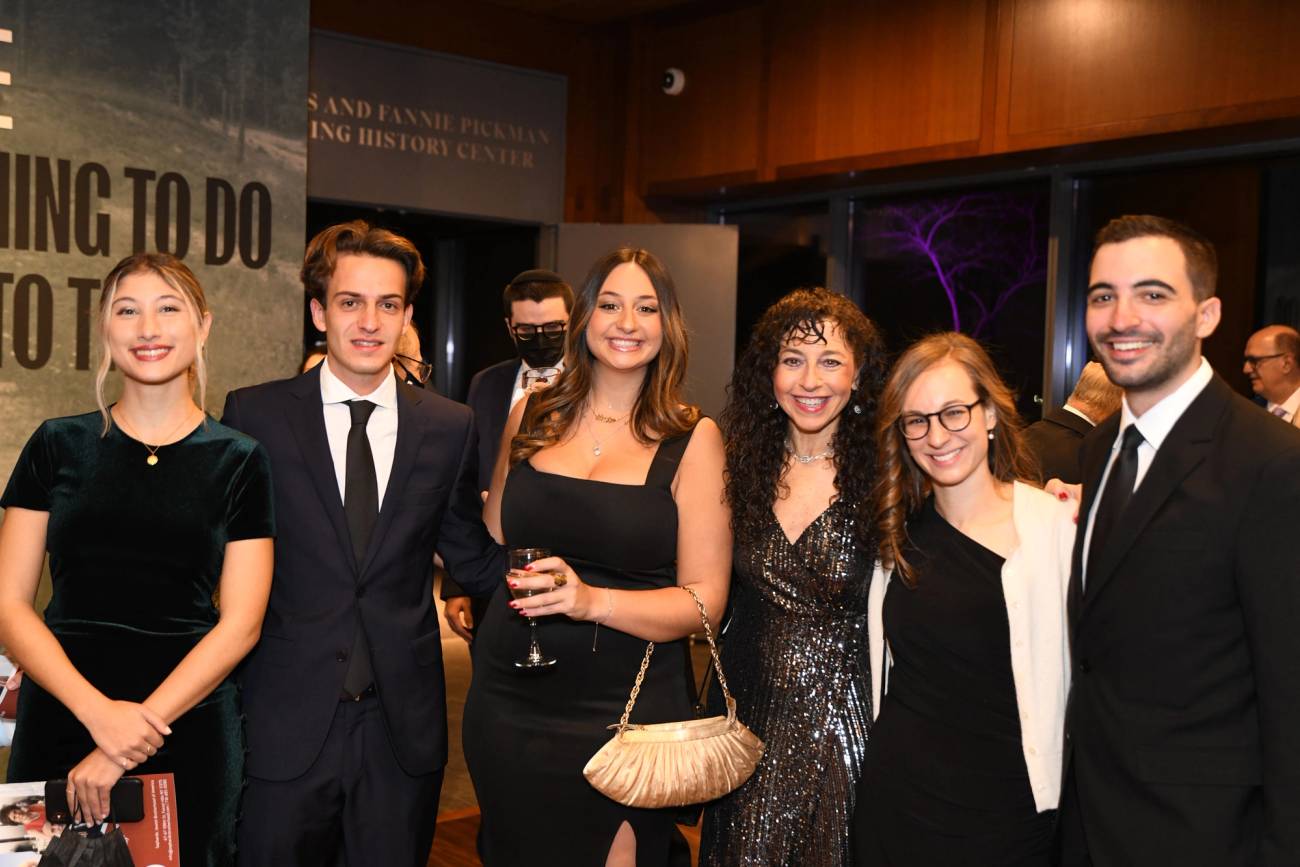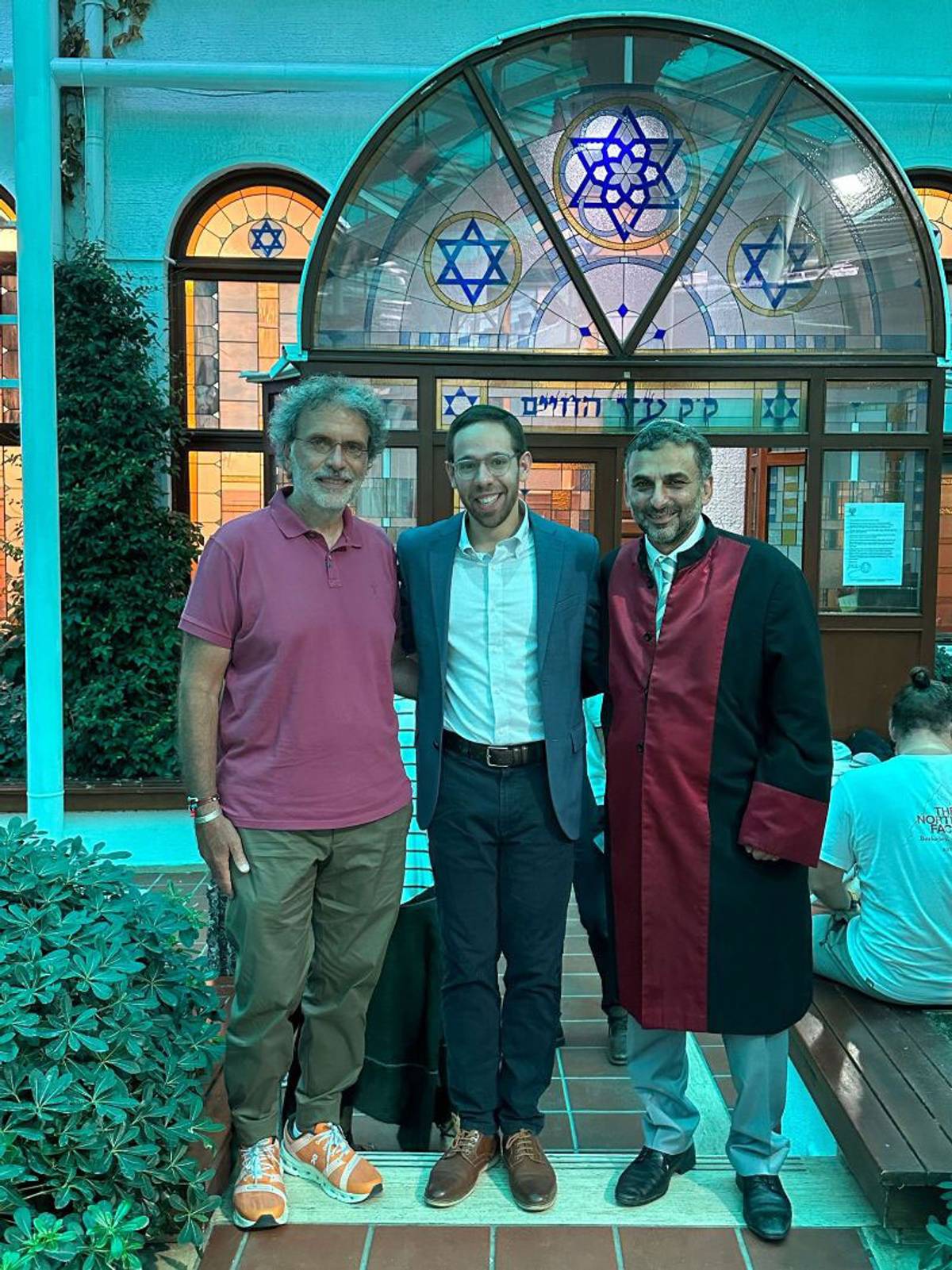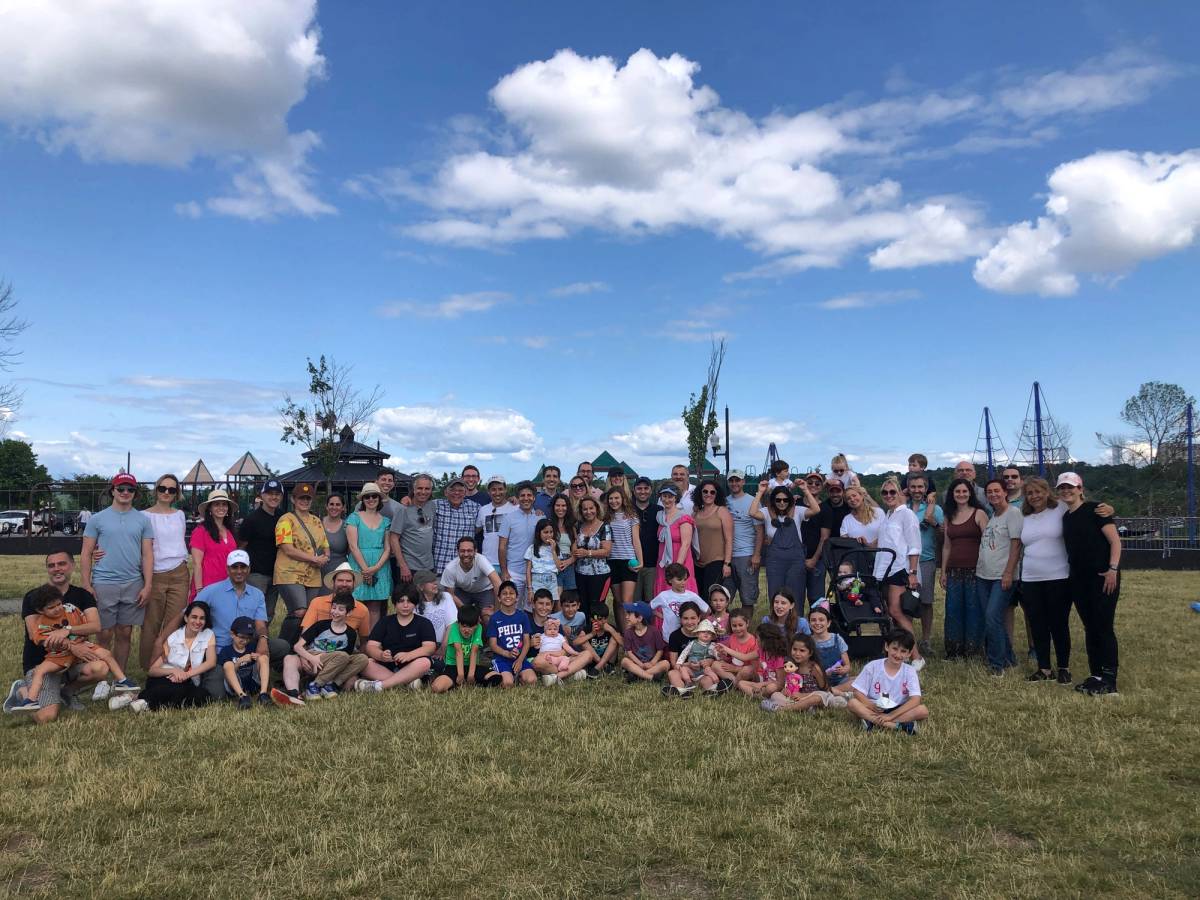Sephardic Jews Make Global Connections
Outreach efforts aimed at Sephardim help connect people to their culture and history across the world

Courtesy Ethan Marcus

Courtesy Ethan Marcus

Courtesy Ethan Marcus
Upon the expulsion of Jews from Spain in 1492, the Bensignor family, along with thousands of other Spanish Jews, traveled across the Mediterranean basin to the Ottoman Empire. The Bensignors settled in Smyrna—now the city of Izmir in what is now Turkey.
With a family history that traces back more than 500 years to Spain, Larry Bensignor maintains a Sephardic identity nurtured by his family of origin; the Sephardic Temple in Cedarhurst, Long Island, where he grew up; and the connections forged with extended family in Argentina and Turkey.
“Our family legacy has been passed down, generation to generation, by oral history for over half a millennium. The story is repeated identically by Bensignors around the world,” said Bensignor, whose Turkish-born grandfather Moise E. Bensignor immigrated to the U.S. in the 1930s from Cuba, where he and his four brothers had lived upon leaving Izmir at the beginning of WWI. While his brothers moved to Buenos Aires, Moise—who spoke seven languages, including Ladino—settled in the Bronx, worked in the import-export business, was a founder of the Sephardic Jewish Center of the Bronx, and wrote a column for La Vara, a weekly Ladino-language newspaper published in New York City between 1922 and 1948.
Today, Larry Bensignor is working to preserve Sephardic Jewish identity in America and beyond as co-chair of the Strategic Planning Committee of the Sephardic Jewish Brotherhood of America, an organization of Jews who trace their ancestral roots to Ottoman, Ladino-speaking Sephardic Jewry. “Sephardic Jews in America are a minority of a minority,” said Bensignor, a third-generation member of the brotherhood. “Those of us in leadership of the brotherhood feel a responsibility to ourselves and our ancestors to ensure the vibrancy of the Sephardic community in America. It brings much joy to my heart and soul to do so. We look forward to continuing to build an organization that will continue for our grandchildren and our grandchildren’s children to have a strong Sephardic legacy in their lives.”
Success is an uphill battle: The Sephardic community in North America is relatively small, generations removed from their immigrant ancestors, often disconnected from their roots, and underfunded. Many of these same issues also face Sephardic communities worldwide. Yet, in today’s global society, the internet and digital media as well as international travel have opened up unprecedented opportunities for education, information-sharing, connection, and relationship-building among Sephardic Jews across the globe. As a result, in the 21st century, Sephardic Jews around the world are now able to connect in ways not available to previous generations—from locating distant family members to learning more about their history and culture.
The Sephardic Jewish Brotherhood of America recently released its first ever National Strategic Plan to ensure the Sephardic community’s long-term vibrancy. Managing Director Ethan Marcus said the goal is to create a future for the Sephardic community in America. Priorities include: modernizing the organization to meet the needs of a younger generation (50% of board members are under 40), providing quality educational programming for Sephardic and other communities, and facilitating information support among Sephardic communities domestically and internationally.
The community is facing an important turning point and now is a good time to address these issues, says Devin Naar, Sephardic studies program chair and Isaac Alhadeff professor of Sephardic studies at the University of Washington. “What does it look like now when the potential composition of the membership has changed so much and the defining features of the culture and community are so much more distant?”

Courtesy Ethan Marcus
Sedat Behar, chair of the brotherhood’s Strategic Planning Committee and the organization’s president, explained: “Our Sephardic culture is worth preserving by any means; it is our nahalah (inheritance) and our segulah/genizah (treasure). It is the culmination of centuries of influence and has deep roots. We will work hard to pass it on to the generations to come.”
To achieve this goal, outreach, understanding the needs of Sephardic communities, and preserving a connection with communities abroad are critical, says Behar, who grew up in Istanbul. One such initiative is a joint partnership with the Jewish community in Turkey to create educational material for children about Sephardic customs, holidays, and life-cycle events, as well as a Ladino dictionary. The Sephardic Jewish Brotherhood has also assisted communities in need—providing fiscal support for Jewish community members in Turkey affected by the 2023 earthquake, for instance.
Contemporary needs are a far cry from those of the thousands of Ladino-speaking Jews who immigrated to the U.S. from Greece, Turkey, and the Balkans during the years before and after WWI. Founded in 1916 as a mutual aid and burial society, the Sephardic Jewish Brotherhood then served thousands of new immigrants who required housing, employment, legal assistance, English-language classes, and burial services while also facing discrimination from the broader society and established Ashkenazi community—unlike today’s college-educated professionals who fit comfortably in the outside world.
Sephardic young adults are now seeking to reclaim their identity, delve more deeply into their heritage, connect with peers from similar backgrounds, and learn Ladino, the Judeo-Spanish language of their ancestors. Growing up in Toronto, Alexandra Fellus had never met Sephardic Jews outside of her family until joining the brotherhood’s Sephardic Young Professionals Network in 2021, subsequently launching its book club.
“We see ourselves and our culture in our books and it reinforces our identities as Sephardic Jews,” said Fellus, who learned Ladino online during the pandemic, and now has 730 followers on her Instagram account, Ladino with Lex. In 2024, she plans to establish Young Professional chapters in Toronto and, after that, Montreal, with networking and social events modeled after those in the New York area. “I think we are building the next generation of Jewish life and connecting an international Sephardic community, bridging the gap between communities around the world.”
Trips to Greece and Turkey have helped Sephardic young adults appreciate their family history and identity. Growing up in Brooklyn, Sofiana Kohen never learned Sephardic history at her Jewish day school. During last year’s Sephardic Brotherhood Young Professionals trip to Greece, she visited Ioánnina, the ancient Jewish city that had been her family’s ancestral home. “Oftentimes we go about our days and lives without truly understanding what we do on certain holidays and why. Understanding what you do and the culture helps you connect with the past and make sure that the candle continues to burn as you create new generations ahead,” said Kohen, who also made new friends on the trip. “I now have a community where I can share my culture and traditions with those who can understand. That is very important.”
Abigail Calderon always knew that her paternal grandfather had immigrated to Mexico from Salonika (now Thessaloniki) in the 1930s but never truly understood her Greek family history until last year’s Young Professionals’ trip to Greece, when she read the names of family members who had perished during the Holocaust on the memorial wall at the Thessaloniki Jewish Museum. This past summer, Calderon, who also has Turkish ancestry, participated in a similar trip to Turkey where she met with young Turkish Jews. “What was most memorable was retracing my family steps and feeling a connection to my roots,” said Calderon, who grew up in Mexico City with a strong Turkish identity at home and at the Sephardic synagogue her family attended.
These in-person exchanges have far-reaching mutual benefits: During these trips, North American Jews celebrated Shabbat and socialized with their peers in Athens and Istanbul. “For small communities like us it is difficult to preserve communal belongingness. Assimilation is an existential threat to Greek Jews,” said Sam Namias, a member of the Assembly of the Jewish Community of Athens, where approximately 2,500 Jewish families reside. “Our community in Greece stands to gain a better connection of its members with their Jewish background and a stronger sense of belongingness, sharing the same values and practicing their religion in the same way, which is very important for small communities in Athens and elsewhere in Greece.”
Meanwhile, Sephardic communities worldwide continue to forge new global connections: In October, the Sephardi Hebrew Community of Cape Town, South Africa, announced these plans: partnering with the Sephardic Jewish Brotherhood of America on a joint delegation trip to the Isle of Rhodes for the 80th-anniversary commemoration of the Jewish deportations during WWII, as well as sending Sephardic South Africans to the Sephardic Adventure Camp in Seattle. Additionally, Sephardic community leaders and rabbis from Turkey, Argentina, the U.K., as well as American cities such as Seattle, Indianapolis, Philadelphia, Los Angeles, New York, and Portland, Oregon, plan to convene in New York City for a Shabbat of Unity for Israel on Dec. 15-16 and for the International Sephardic Community Gala and Summit on Sunday, Dec. 17.
Outreach to younger generations remains a challenge worldwide—even in Argentina, where 50,000 Sephardic Jews constitute one of the largest such populations outside of Israel. Intermarriage is an issue and young people are not religious, explains Marcos Mayo, president of the Sephardic community of Argentina. Recently, though, the tide is beginning to turn as young, nonreligious Jews return for activities such as social programs and trips to Israel. “We would like to exchange experiences with Sephardim all around the world because we have a common Sephardic tradition,” said Mayo, whose visit to New York last year with Isaac Sacca, the Sephardic chief rabbi of Argentina, represents a first step in that direction.

Courtesy Ethan Marcus
Similar challenges face Turkey, where more than 95% of its approximately 15,000 Jews are Sephardic. “Previous generations were preserving culture in daily life and didn’t have a global world. Today the numbers are decreasing,” said Deniz Saporta, executive director of the Jewish Community of Turkey, which strives to preserve its Sephardic heritage through local initiatives and global partnerships with other Sephardic communities. “We have mixed marriages everywhere. To keep the culture alive is harder and harder. … My parents spoke Ladino but my children don’t.” The Sephardic Cultural Research Center publishes books on the Sephardic heritage. Plans are in the works for Turkish Jewish teenagers from the Jewish School in Istanbul to participate next summer in a CIT program to train as counselors at the Sephardic Adventure Camp in Seattle—a follow-up to summer 2022, when Turkish students attended the camp to learn Ladino and Sephardic prayer to strengthen their cultural heritage and identity that had slowly degraded over time.
Notably, in Israel—home to the world’s largest Sephardic community—reclaiming Sephardic identity is a nonissue. The Sephardic influence permeates Israeli language and culture, said Eliezer Papo, who teaches Ladino and Sephardic culture at Ben-Gurion University of the Negev.
Today opportunities for information-sharing include online classes, Facebook and WhatsApp groups, YouTube videos, websites, plus newspapers and journals such as El Amaneser and Aki Yerushalayim (both in Ladino), El Ermando Sefardi (English with Ladino content), and Kaminando I Avlando (French with Ladino content). The Spanish-language site eSefarad—an information repository about the Sephardic world with over 18,000 articles and 600 videos on its YouTube channel—attracts 2,000 global visitors daily including descendants of crypto-Jews, said Marcelo Benveniste, who co-founded the Buenos Aires site in 2008 with his wife, Liliana. Since 2020, its Spanish-language program, Enkontros de Alhad, has offered online lectures about Sephardic history and culture on Thursdays; its Sunday program features interviews in Ladino with Sephardic guests from across the globe.
Since 2020, the Sephardic Digital Academy has offered hundreds of online classes on Sephardic culture, history, and traditions. And Habura, an online, global bet midrash with a classical Sephardic approach to Torah study and Judaism, attracts hundreds of participants from 23 countries. “The digital platform is important because now the Sephardi communities tend to be in the minority. There is a feeling of distance and we should take advantage of our modern connections to support and share with each other in order to strengthen our solidarity,” said Joseph Dweck, senior rabbi of the S&P Sephardic community in the United Kingdom, who co-founded Habura with his students Sina Kahen and Avi Garson in 2021. “The reason we are connecting is that we have a rich, illustrious wisdom tradition and that is what I want to showcase, offer, and teach. We have the technology today that allows it.”
Looking ahead, Naar hopes the next generation of Sephardic leaders will become familiar with the history and culture that have shaped them, while understanding changing needs to ensure a living and organic Sephardic community. As for the mainstream Jewish community, the Sephardic studies professor worries: “Will the framework of Ashkenazic Jews be the normative according to which Jewish community organizations continue to operate? ... Will there be new frameworks to accommodate a vast range of Jewish experiences? Will all the different communities under the umbrella of Sephardic/Mizrahi be lumped together into the broader Jewish community? I hope that will not happen.”
Paula Jacobs is a writer in the Boston area.